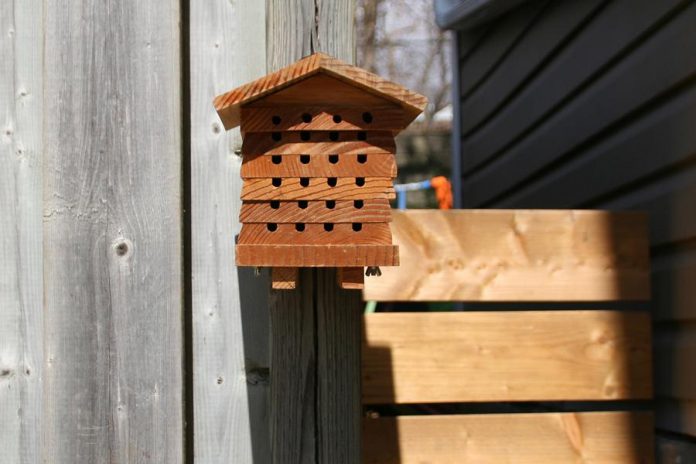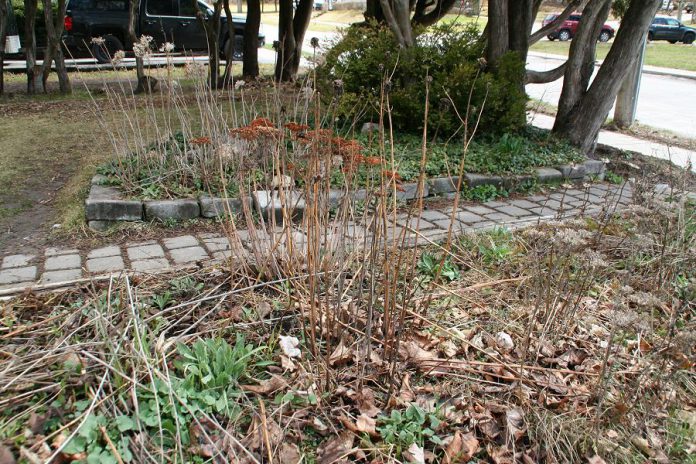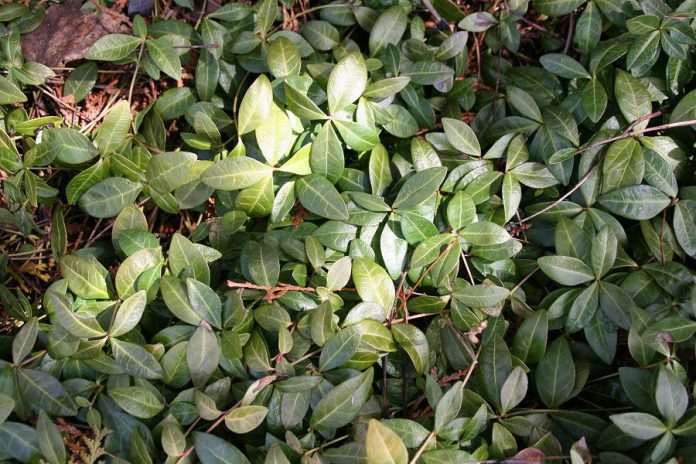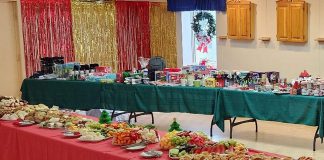
Growing season is nearly here, and those of us lucky enough to have a yard can enjoy quality time in the garden this spring and summer. You may be looking at which seeds to plant or considering how you could split or move plants around in your yard.
Before making those decisions, consider the network of organisms that actually help your garden grow.
Below are some fun activities (for kids and adults alike) and some tips on how to create gardens that are friendly for wild pollinators.
Find and support wild bees in your garden
Here are five ways you can find and support wild bees in your garden.
Look in hollow stems that have dried out over winter and are at least six inches long

These stems can be suitable nesting locations for cavity-dwelling native bees. If the hollow centre of a stem is filled with bee cells (made of leaves and natural material) then it was home for new bees throughout the winter.
Look in the bare soil for evidence of wild bees
Ground-dwelling solitary bees emerge from their burrows as the weather warms up. Approximately 70 per cent of our native bee species in North America are ground dwelling.
The polyester bee (Colletes inaequalis, also known as the plasterer and cellophane bee) is one of the common native bee species in North America and one of the first to emerge each spring. This bee makes its nest in sandy, bare soil.

Check sandy areas in your garden and keep checking regularly for signs that the bees have emerged. If you are lucky, you will see tiny burrows where the bees have dug themselves out of the soil to pollinate your plants throughout the spring and summer.
Build or buy a bee house for newly emerged cavity-dwelling bees
Providing lots of places for bees to make their nests is a great way to support them in your yard. You can also support these bees simply by leaving hollow stems on your plants instead of removing them after the winter. The plants will grow new stems and it won’t be detrimental to the plant’s health to leave old stems. It is a win-win-win. Less work for you, the gardener, more homes for bees, and happy pollinated plants for everyone.

Create pollinated lunches with your family
Use ingredients that are pollinated by different animals. For example, bumblebees pollinate tomatoes. Spring-emerged native bees and domesticated honeybees pollinate apples. Squash bees pollinate cucumbers, pumpkins, and squashes. Flies pollinate the Theobroma cacao trees that we make chocolate from.
Design or plan gardens that support pollinators
Whether it is one new plant or a whole new garden, you can add to the biodiversity of your yard by including more native flowering species that support wild pollinators.
Make a pollinator-friendly garden using native plants
You may have heard of plants being referred to as native, aggressive, or invasive. Understanding these terms is important when making pollinator-friendly gardens.
“Native species are plants that have been here for such a long time that other plants and animals have evolved, and sometimes adapted, around the existence of the native plant,” explains Vern Bastable, manager of GreenUP Ecology Park.
Native plants such as bee balm, purple coneflower, and wild strawberry provide excellent habitat for pollinators. Each of these plants also has edible and medicinal properties for humans. These plants are perennials, meaning that as long as they are planted properly and regularly watered, they should come back year after year.
Aggressive plants can spread quickly, moving into unintended areas of a garden, however this does not mean they are necessarily affecting the environment in a negative way. For example, the wild strawberry is known to spread aggressively through its trailing root system, but its native status and fruit bearing ability make it beneficial for our area.

In addition to the native plants and some beneficial aggressive plants in Ontario, there are plants that are invasive in the province. Invasive plants have been brought here from elsewhere in the world, commonly Europe or Asia, and have a tendency to spread, and even out compete, native species.
“When invasive plants are allowed to establish, they will take over the ecosystem, altering it irreversibly to the detriment of the environment, economy, and social enjoyment,” says Belinda Junkin, executive director of the Ontario Invasive Plant Council. “If invasive plants are allowed to spread uncontrollably, they will become a costly and difficult issue to resolve in the future.”
Some invasive species have been intentionally introduced for food, or because they are attractive and self-sustaining in garden plots. For example, European buckthorn was planted in fencerows and windbreaks on North American farms in the 1880s. When birds eat the buckthorn berries, the seeds are quickly and widely distributed through their fecal matter allowing this plant to proliferate and out-compete shrubs that are native to this area.

To prevent the spread of invasive plants in Ontario, you can learn which plants are invasive. Research plants before introducing them to your yard. The Ontario Invading Species Awareness Program and the Ontario Invasive Plant Council are great resources for learning about these species. Learn more at ontarioinvasiveplants.ca.
For example, periwinkle, goutweed, and English ivy are frequently sold as ornamental ground covers, but are actually native to Europe and Asia and are extremely invasive here in Ontario.
For a handy list of native plant replacements for invasive counterparts, check out the Grow Me Instead (Southern Ontario) guide. For example, replace invasive periwinkle with native wild ginger, wild strawberry, or mayapple.
You can help researchers monitor the spread of invasive plants by reporting them online at eddmaps.org. This reporting app includes images, descriptions, and distribution maps to help you identify invasive species. You can also take your own pictures and report you own discoveries of invasive species.
Enjoy your garden this year by encouraging the growth of native, locally adapted species that look beautiful and support wild pollinators.
The Ecology Park Market Garden offers a wide variety of native wildflowers, shrubs, and trees. For updates on changes at Ecology Park due to COVID-19, please follow PtboGreenUP on social media or visit greenup.on.ca/ecology-park/


























